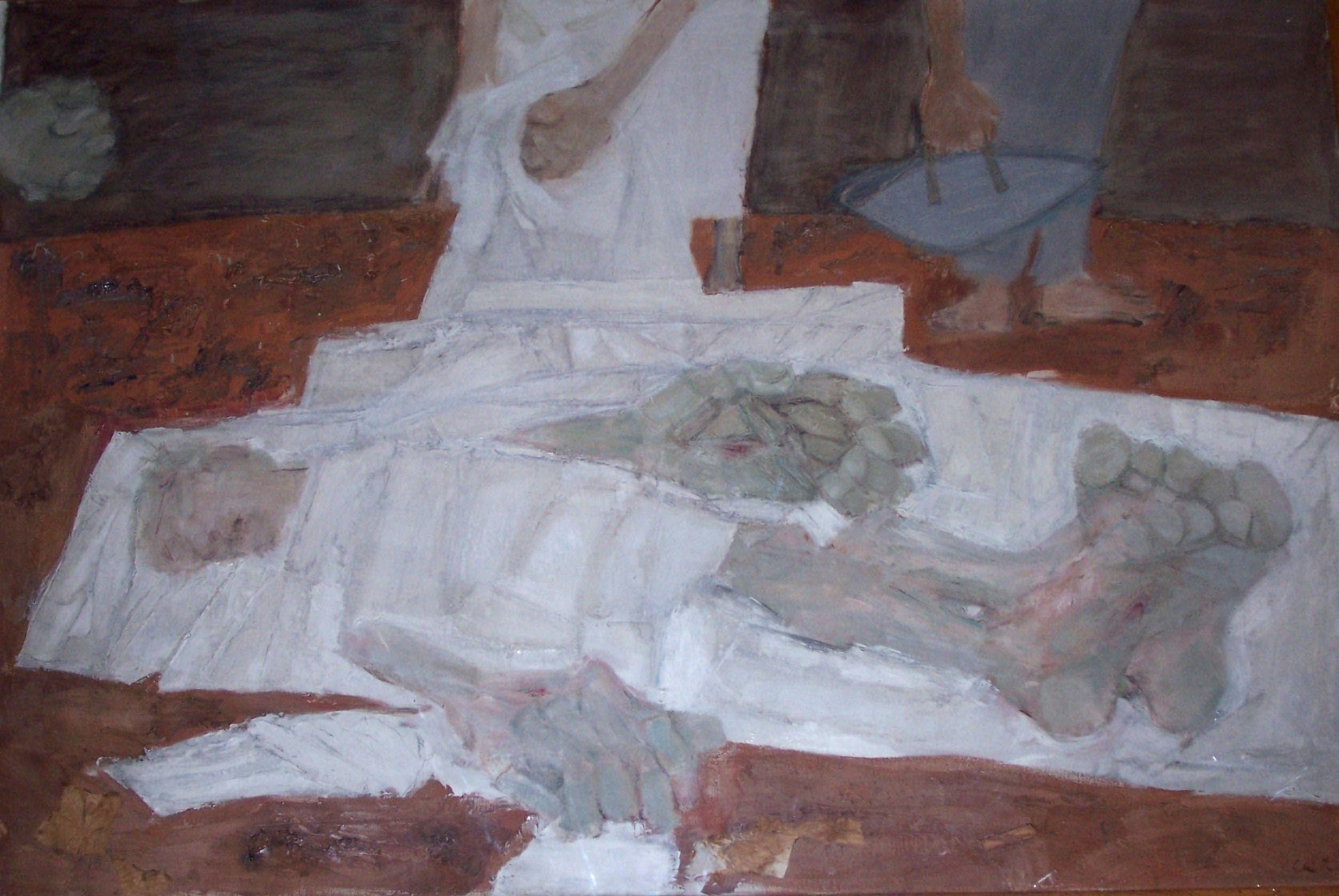Ceri Richards: Deposition


Title: Deposition
Artist: Ceri Richards (1903-1971, Welsh)
Location: St Mary’s, Swansea (Church in Wales)
Date: 1958
Nominated by Rowan Williams (former Archbishop of Canterbury): ‘Ceri Richards’s Deposition is an uncomfortably stark work. When it was first installed in St Mary’s Church, Swansea, there were those who used dismissively to refer to it as “The Road Accident in Calcutta”. It certainly does not reproduce the conventionally consoling aspects of most classical Deposition images, where the emotional register is often a sort of calm after pain, a somewhat drained quietness, shared by a little community of those who loved the crucified Jesus – his mother, Magdalene, John. In contrast, here is a composition where the emphasis is on the sheer physicality of the pain of the cross, unsoftened by any relaxation of line. The immensely exaggerated or swollen hands and feet are a powerful presentation of this physical anguish. There is no escape into the grief of bystander; the other figures seem muted and held at a distance by the enormity of the foregrounded fact of atrocity. This is a picture of the isolation and the anonymity of pain. No picturesque disciples or madonnas intervene between the viewer and the Crucified: we have to do the work ourselves of facing the dereliction of the dead saviour. In a sense, a very “Protestant” version of a theme perhaps traditionally more visible in Catholic devotional art; and that may be why it is still a rather shocking presence in the liturgical setting. But it is also possible to see it as a necessary clearing of space around the cross – the cross which can be (is bound to be) overlaid with the community’s interpretations and reactions. As I remember looking at it regularly as a teenager during services, I find that it did not in fact upset the liturgical act, but somehow anchored it in a disturbing material particularity – which ought to make sense of a kind when you think about the Eucharist.’
Submitted to ‘The Religious Theme’, a Contemporary Art Society exhibition at the Tate Gallery in 1958, both Deposition and A Study for Deposition (1958) show the exhaustion in Christ’s body after he has come down from the cross. As the critic Mel Gooding writes, ‘the Depositions ... situate the event in what might be described as a timeless modernity; the tragic moment at “the still point of the turning world” is inscribed in the banal and ordinary. The dead Christ is laid on a white sheet amidst the mud and debris of a public place.’ Richards had originally intended the work to be shown in the National Museum of Wales but ultimately it was hung in St Mary’s Church of Swansea, a location that Richards was happy with.
Ceri Richards (1903–1971, Welsh) grew up in a household where music and poetry played a central role. This early experience was to influence his work throughout his career. He created bodies of work inspired by the poetry of Dylan Thomas as well as later in life a series of paintings of sunken cathedrals based upon the compositions of Debussy. His style evolved with the times, and he experimented with Surrealism, Cubism and abstraction. Richards was a prizewinner at the 1962 Venice Biennale.
Further Information
Medium: Oil painting
Permanent display
See Richards’ Deposition on the Ecclesiart map here.
Other artworks in churches by Ceri Richards: Stained glass windows (1964), Derby Cathedral; Windows, tabernacle and reredos (1966), Liverpool Metropolitan Cathedral
